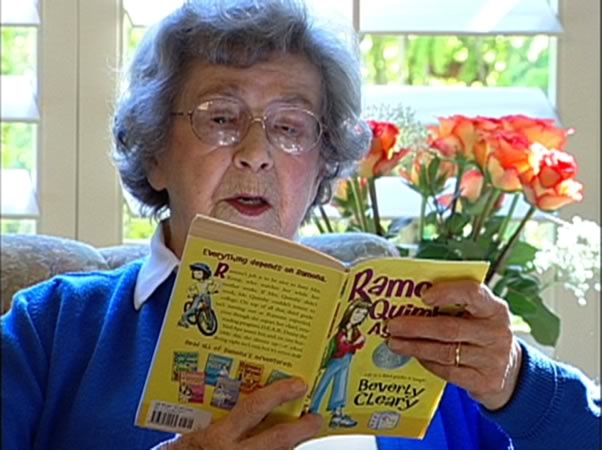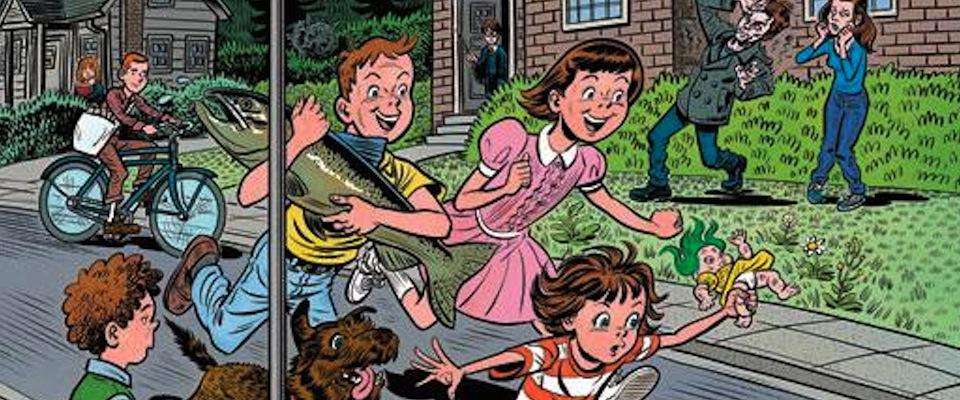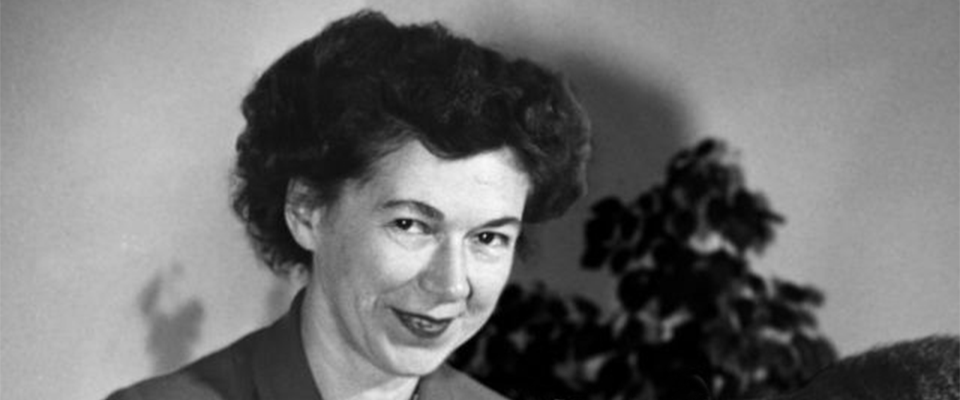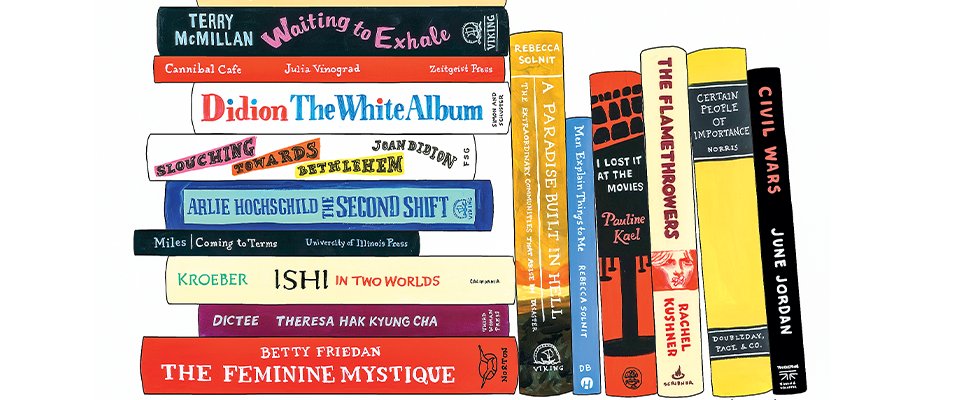You won’t find a vampire in a Beverly Cleary book. There are no zombies, witches, warlocks, or wizards in the world inhabited by Ramona and Beezus Quimby, Ellen Tebbits, Henry Huggins, Henry’s dog Ribsy, or any of the fictional gang on Klickitat Street in Portland, Oregon. Hardcore drug use and teenage pregnancy are not addressed, and no one seems to suffer eating disorders. There are no celebrities or inside looks into the fabulous world of Manhattan’s elite. No major crimes get committed and no major natural or manmade disasters occur. There is zero texting.
Instead, there are ordinary kids and ordinary families with ordinary triumphs and problems, and somehow, in Beverly Cleary’s quietly masterful hands, this has been enough to build a whole world for young readers. Cleary’s books have sold 91 million copies since Henry Huggins was published in 1950. There is a Beverly Cleary sculpture garden in Portland, along with a Beverly Cleary school, and, of course, a Beverly Cleary dorm at Cal, the school she graduated from in 1938.
Generations of readers and writers have felt her influence. “Beverly was my inspiration. Still is,” Judy Blume, another young adult novel legend, writes in an email. New York Times columnist and Pulitzer Prize winner Nicholas Kristof, a fellow native of Yamhill, Oregon, considers Cleary to be as iconic an American figure as Norman Rockwell (“each is a great artist”), and he has a stated preference for Henry Huggins and Ribsy books as well as the Ramona series.
(Editors’ update: As Cleary celebrates her 100th birthday in April of 2016, her books continue to demonstrate remarkable staying power.) In an NPR interview just before her 90th birthday, Cleary said that the world has changed, but kids have not. Ramona and the gang do seem to be weathering the transition from Baby Boom children to Millennial generation just fine.

Born Beverly Bunn, she grew up during the Depression in a small town, the child of a wrathful mother and a stoic father. As she details in the first of two memoirs, A Girl From Yamhill, her father lost the family farm and had to take a job as a security officer in a Portland bank. Then he was laid off from that job in 1930. It was a scary time for young Beverly, who watched their already meager assets dissolve. “I sat filled with anguish, unable to read, unable to do anything,” Cleary writes of the day that her father lost his job. “When Dad finally emerged from the bedroom, I felt so awkward I didn’t know what to say or even how to look at him.” Later, this experience apparently informed Ramona coped with her father’s unemployment.
Beverly had an early aptitude for writing, which both pleased and threatened her mother, who also had writing aspirations. In later interviews, Cleary said that instead of supporting Beverly’s writing and success her mother became obsessed with her daughter’s looks and ability to attract a suitor. Perhaps the most disturbing scene of A Girl From Yamhill is when Beverly discovers that her mother has been keeping a diary of her daughter’s nascent love life.
Without fanfare or overt rebellion—the word feminist doesn’t come up in either memoir—Beverly embarked on an unusual path for a young woman of the time. She resisted her mother’s pressure to marry and pursued an education and a future outside of Portland. Her big break came at the end of high school, when a relative in Southern California offered to put her up, for a two-year stint at Chaffey Junior College, in what is now Rancho Cucamonga, and her father uncharacteristically stepped in to overturn her mother’s veto. In a moment that “felt as if lightning had shot through me,” Beverly was given the chance to pursue her dream of becoming a children’s librarian.
From Chaffey, then, to Berkeley. She did not hold “much hope” of getting in or of paying Cal’s $150 nonresident tuition, but applied anyway. When she was accepted, she vowed “by hook or by crook” to attend. She got off the wait list and into the new and inexpensive women’s cooperative, Stebbins Hall, her home for “two of the most interesting years of my life.”
Always an honor student, she was now swimming in a much bigger pond of high achievers. Her roommate Miriam would wake at 4 a.m. to study. As an English major, Beverly was required to take “the Comprehensive,” an exam spanning English literature from 1350 to 1900.
Social life at Cal revolved around going to dances, with occasional “lingering” goodbyes on the steps of Stebbins. Beverly steered clear of the frat parties that served beer, but did maintain a full dance card. She dated an English physicist, got duped by a suitor who happened to be married, and met the love of her life, Clarence Cleary.
But marriage would have to wait, because Beverly was determined to work for a year after library school. She went to Seattle, where she earned a degree in library science. In 1939, she secured a year-long position in a small Washington town called Yakima. Painfully, neither of Beverly’s parents approved of Clarence Cleary, largely because he was Catholic, so the couple eloped in 1940. They were together until his death in 2004.
True to her vision, Beverly became a children’s librarian. She loved introducing young people to reading, though she found it hard to find well-written books for boys. Only one, Honk, the Moose by Phil Strong, spoke to a group of “grubby little boys” by being both funny and accessible. As she wrote in My Own Two Feet, that slim volume addressed “kids who parked their earmuffs on the circulation desk in winter and their baseball mitts in summer.”
It would take another decade before Cleary, at 32, wrote her first book. During WWII, she and Clarence moved back to the Bay Area and Beverly worked at the Sather Gate Book Shop and as an Army librarian. After the war, and a miscarriage, Cleary, now settled in Berkeley, shook off a bout of depression and according to her memoir, on January 2, 1949, she took out her typewriter, pencils, and paper, and began to write. For inspiration, she had her days as a children’s librarian. Why, she wondered, aren’t authors writing books for ordinary boys and girls? The cast of characters from Klickitat Street, a name she had always liked, began to emerge.
Ironically, Cleary’s most enduring creation, Ramona Quimby, was an afterthought: Cleary just thought that too many of her characters were only children, and she needed a younger sibling. Cleary had no idea Ramona would become one of the world’s most famous younger sisters.
In hindsight, it’s tempting to see Cleary’s success as inevitable. She began writing when the Baby Boom generation was creating an enormous market for children’s books. A 1959 New York Times story notes that 1,500 new titles were due to be published. By the ’70s, young adult (YA) novels had become a phenomenon, further segmenting and enhancing the kinds of books available for young people. These days, sales of kids’ books top $3.2 billion annually in the United States.

Though Cleary’s clear style and everyday subject matter make her work seem effortless, it is not. Beneath the surface of the Klickitat clan or her later efforts for older readers like Sister of the Bride and Fifteen, Cleary deals with complicated emotions—as complicated as, say, her relationship with her own controlling mother.
Cleary’s female characters, especially, deserve praise. Far from being two-dimensional boy-crazed romantics or asexual tomboys, their lives are full, balancing family life with school, friends, and occasional romance. “She is having very interesting conversations about the role of girlfriend to boyfriend, wife to husband,” says Lizzie Skurnick, who turned her YA columns at Jezebel.com into the book Shelf Discovery: The Teen Classics We Never Stopped Reading. “It’s all about the idea of what is the proper balance of domesticity and self-determination.”
Teen writing has become so lurid of late that it can be hard to remember a time when people weren’t debating the hypothetical merits of werewolves versus vampires. But extreme situations can cover up certain weaknesses in the writing itself. “With Beverly Cleary, she presents the actual emotional danger and complexity in wanting a boy to like you,” Skurnick says.
Cleary herself never had any trouble staying true to her principles. She ends her second memoir with two resolutions. “I would ignore all trends,” she writes, “and I would not let money influence any decisions I would make about my books.” She kept her word.




















